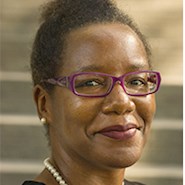
By Margaret M. Mitchell
This issue we cover a range of topics in our feature articles, including waterfront infrastructure, off-site modular construction, wildfires, and a summer intern experience.
First in the lineup are two articles based on sessions that will occur at the Coasts, Oceans, Ports, and Rivers Institute’s Ports ’25 conference June 1-4 in Providence, Rhode Island.
“Standing Firm” explores the seismic design of marine structures. As authors Julie A. Galbraith, P.E., M.ASCE, and Marc I. Percher, P.E., M.ASCE, explain in the article, “Piers and wharves are unique structures with special challenges that require their own approach to seismic evaluation and design,” most notably through ASCE 61, Seismic Design of Piers and Wharves. The second edition of this standard, ASCE 61-25, will debut at the conference.
Concluding the ports theme is “Waterfront Watch” by Thomas Spencer, P.E., S.E., P.Eng, BC.PE, M.ASCE, Sean Chapman, P.E., M.ASCE, and Noah Elwood, P.E., BC.OE, BC.PE, M.ASCE. The authors note that in the last decade the ASCE Ports and Harbors Committee has worked diligently to develop manuals of practice specific to this area, such as Manual of Practice 130, Waterfront Facilities Inspection and Assessment. The article focuses on the different types of defects that waterfront infrastructure can incur (and what causes them), as well as the types of inspections, testing, and rehabilitation needed to keep these assets in good shape, economically viable, and safe for the public.
We then head over to the West Coast, to one of the busiest airports in the world: Los Angeles International Airport. In “Portable Concourse,” authors Derrick Roorda, P.E., S.E., Louisa Phillips, P.E., and Stuart Brumpton detail the building of a new concourse employing the off-site construction and relocation method, a process that resulted in several benefits compared with conventional construction: lower costs, more efficient movement of work crews and equipment, and less interruptions to airport operations. Scheduled to be completed in September, the new concourse will add eight gates.
Now is usually the time of year when Civil Engineering covers the Best Places for Civil Engineers: a top 10 list of the best cities to practice in, along with an in-depth review of the top three cities. For the last few years, Los Angeles has ranked at or near the top in the annual list. Although the data were not available by the time of publication to know exactly where the city ranks, we felt it imperative to highlight LA in recognition of its place on the list in previous years and the extensive damage the area sustained due to the wildfires in early January. In “Rebuilding and Protecting LA,” author Robert L. Reid interviewed 13 wildfire experts in various sectors “to explore the critical role that civil engineers will play in the rebuilding of the built environment in and around LA County, as well as ways to better protect the region from future fires.”
And finally, we head back across the country to North Carolina in “An Engineering Intern’s Summer” by Audrey Mobed. Recounting her paid intern experience last summer at a civil engineering firm, she writes: “It was a terrific opportunity to gain hands-on experience in civil engineering and to explore potential career paths within the field. ... The relationships built during an internship are as valuable as the knowledge gained from it.”
Civil Engineering hasn’t covered intern experiences often, but we’d like to hear from students or companies that have had a positive experience helping train and inspire the next generation of civil engineers. If that’s you, please contact us with your stories at [email protected].
See you in July!
Margaret M. Mitchell is the editor in chief of Civil Engineering.
This article first appeared in the May/June 2025 issue of Civil Engineering as “Mixed Matters.”



